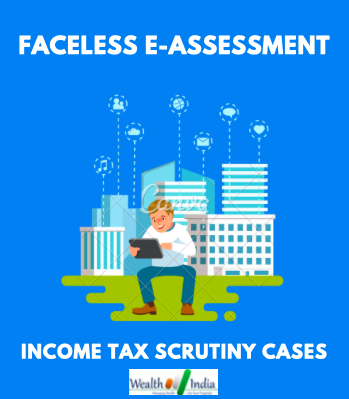
The finance minister has already formed a notice for the e-assessment Scheme formed in 2019. It will be further incorporated for conducting faceless scrutiny assessment of Income Tax Return (ITR). The scheme further involves the formulation of e-assessment centres at national and regional levels. It will further input in the auto-allocation of cases among the mentioned centers.
Furthermore, it will state all of the communication with taxpayers and among assessment centres are going to be completely electronic. The communication generated needs to be digitally authenticated. Above all, the most important factor that needs to be seen is that the assessees will not mane personal appearance at the centres.

The Founders and CEO at tax2win.in, Abhishek Soni states that the new scheme will be notified through the Central Board of Direct Taxes. It will completely change the way ITR gets scrutinized. Before, the Income Tax Return was scrutinized by the assessing officer of the individual taxpayer conducted an online process. However, in the new scheme, you will get the assessment faceless but you will not have to go and meet any assessing officer during the preceding period. It is through your ITR, it will be scrutinized through a computerized randomly selected regional unit which will be implemented under the scheme.
The partner of Dhruva Advisor LLP, Rishi Kapadia states that the Central Board of Direct Taxes will be notified with the e-assessment scheme of 2019. The aim objective of the scheme is the reduction of interference between the tax payment and the tax department. This will further impart transparency and accountability. The scheme paves for a better modification in the manner where the tax assessment will be undertaken. Both the taxpayers and the tax department will have to gear through their systems to understand and act as per the scheme.
Personal representation by a taxpayer will be limited and only allowed through video conferencing. Considering that there is only a limited window of the interactor, taxpayers will have to submit detailed documentation for explaining the tax position.
Here are the ten most important factors to know about the E-assessment of 2019.
- Under the scheme, the scrutiny notice will be issued to the individual under section 143(2) if he has been reported of his income or over-stated losses.
- The individual will have to revert within 15 days from the date of the receipt of the notice. This notice will be issued and sent electronically to the tax payer’s account on the e-fling website. It can be sent to the registered email address or the mobile app of the income tax department which has the input of the registered mobile number.
- The individual will have to respond to the notice or order received through the registered account only, The response shall be considered successfully submitted only when the individual has received the acknowledgement from the National e-assessment centre.
- The individual taxpayers will not have to appear personally or through authorized representative concerning the proceedings. Whether it is for the tax authority, National e-assessment centre or regional e-assessment centre or any unit that has been set up under the scheme, the person does not need to be present.
- All communication between the department and the taxpayer will be done electronically. When it comes to internal communication between the income tax department, it will also be done electronically.
- The e-assessment is fully automated. Under this scheme, the National e-assessment centre will assign the scrutiny case to any of the regional e-assessment centres. This will be conducted in the form of automated allocation system.
- If the regional assessment needs assistance from the verification unit or technical assistance from the technical unit, such request is going to pass through the automated allocation system only.
- Now, if the regional assessment is looking for further information, details or documentation from the taxpayer, then that request is going to be conducted through the National e-assessment centre.
- The regional assessment unit will make a draft assessment order and forward it to the National e-assessment centre.
- The National e-assessment centre will further examine the draft. It will be received in relevance with the risk management strategy which has been mentioned by the CBDT.
You need to be updated related to such functionality and the things which are important when it comes to filing ITR. Not only this, this E-Assessment Scheme, 2019 can prove to be a boon to the individual taxpayers as well.
